African Coffee Bean producing areas and characteristics Story of Starbucks Coffee Bean producing areas
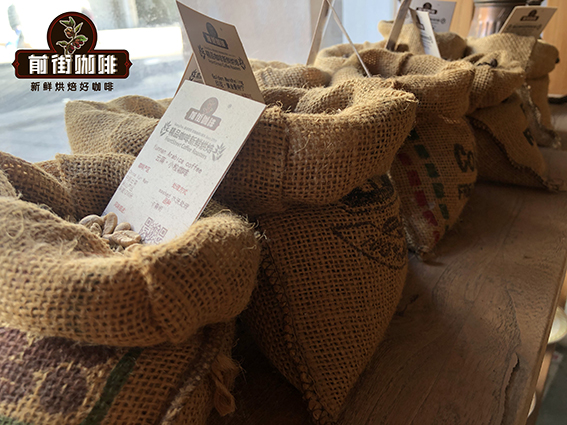
Professional coffee knowledge exchange more coffee bean information please follow the coffee workshop (Wechat official account cafe_style)
Nothing occupies a place in boutique coffee than the African producing areas with charming citrus flowers and fruit aromas, such as coffee beans in Ethiopia and Kenya. I believe that coffee fans are no stranger. Yega Xuefei captured a batch of coffee rookies with its unique aroma of citrus flowers, and the sour sour of Asalia coffee beans in Kenya should not be underestimated, which has been praised by all coffee fans. Next, this article in Qianjie will popularize the flavor characteristics of African coffee producing areas.
Coffee bean producing area in Africa
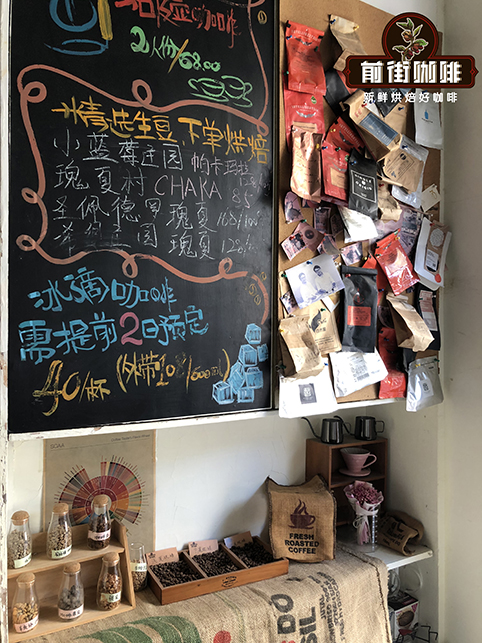
As the birthplace of coffee, Africa plays an important role in the whole coffee industry. Qianjie Coffee believes that African coffee is generally characterized by strong aroma and charming acidity, its acidity is lively and lively, but African coffee is often slightly thin and not very sweet. So Qianjie thinks that African coffee is suitable for coffee fans who like sour coffee. If you like more mellow coffee, you might as well choose Asian coffee beans.
Ethiopia
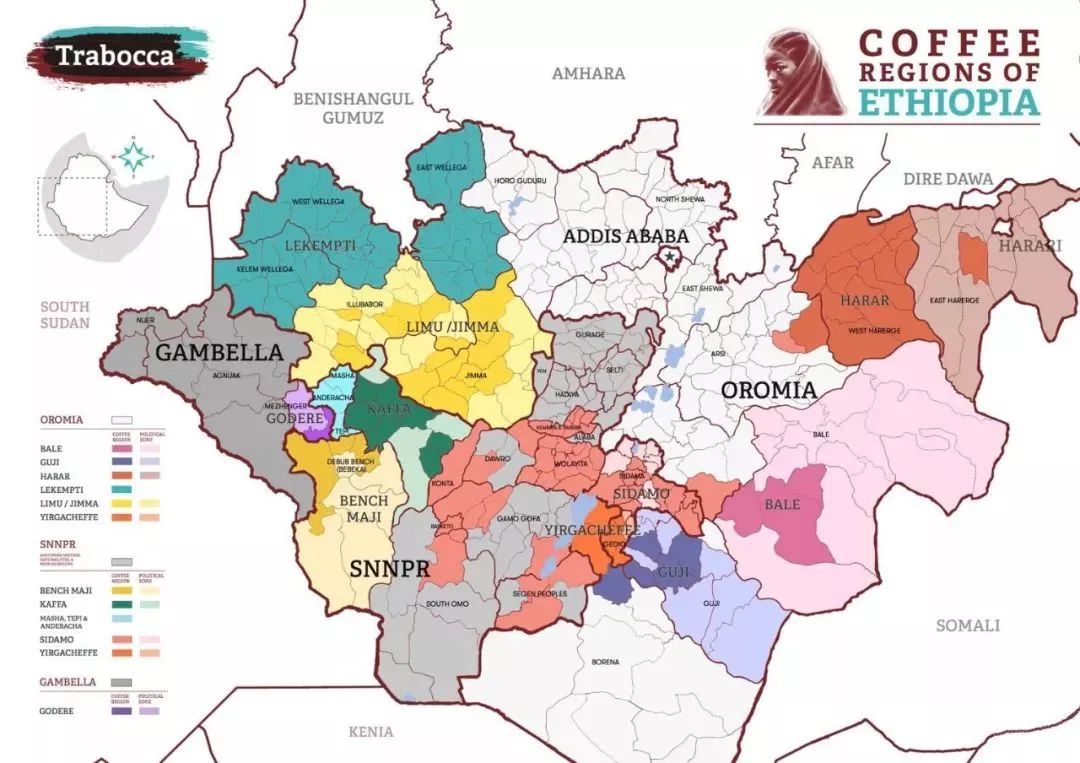
Qianjie believes that coffee fans can think of Ethiopia when it comes to Africa. Ethiopia is the birthplace of coffee, and its coffee seeds have spread all over the world and spawned a variety of varieties.
Coffee has been integrated into the social structure and cultural economy of Ethiopia for hundreds of years, and coffee is the cultural core of the Ethiopian people and an important source of income for most people. Ethiopian coffee is almost always on the menu of coffee shops around the world, and Qianjie coffee is no exception.
Coffee cultivation in Ethiopia is divided into:
Forest coffee forest coffee (8-10%), coffee trees and other crops coexist in the primeval forest, without any artificial care, farmers will pick coffee fruits regularly.
Forest-semi-forest coffee semi-forest coffee (30-35%), the planting area of coffee trees is between the forest and the living areas of farmers, coffee trees are naturally produced varieties like forest coffee, farmers will manage the coffee planting areas and grow other cash crops.
Rural coffee garden coffee (50-55%), coffee trees are planted around farmers' living areas, and most of them are grown by farmers themselves.
Plantation coffee plantation coffee (5-6%), a large private grower, has more treatment facilities and production capacity.
Ethiopian coffee producing area
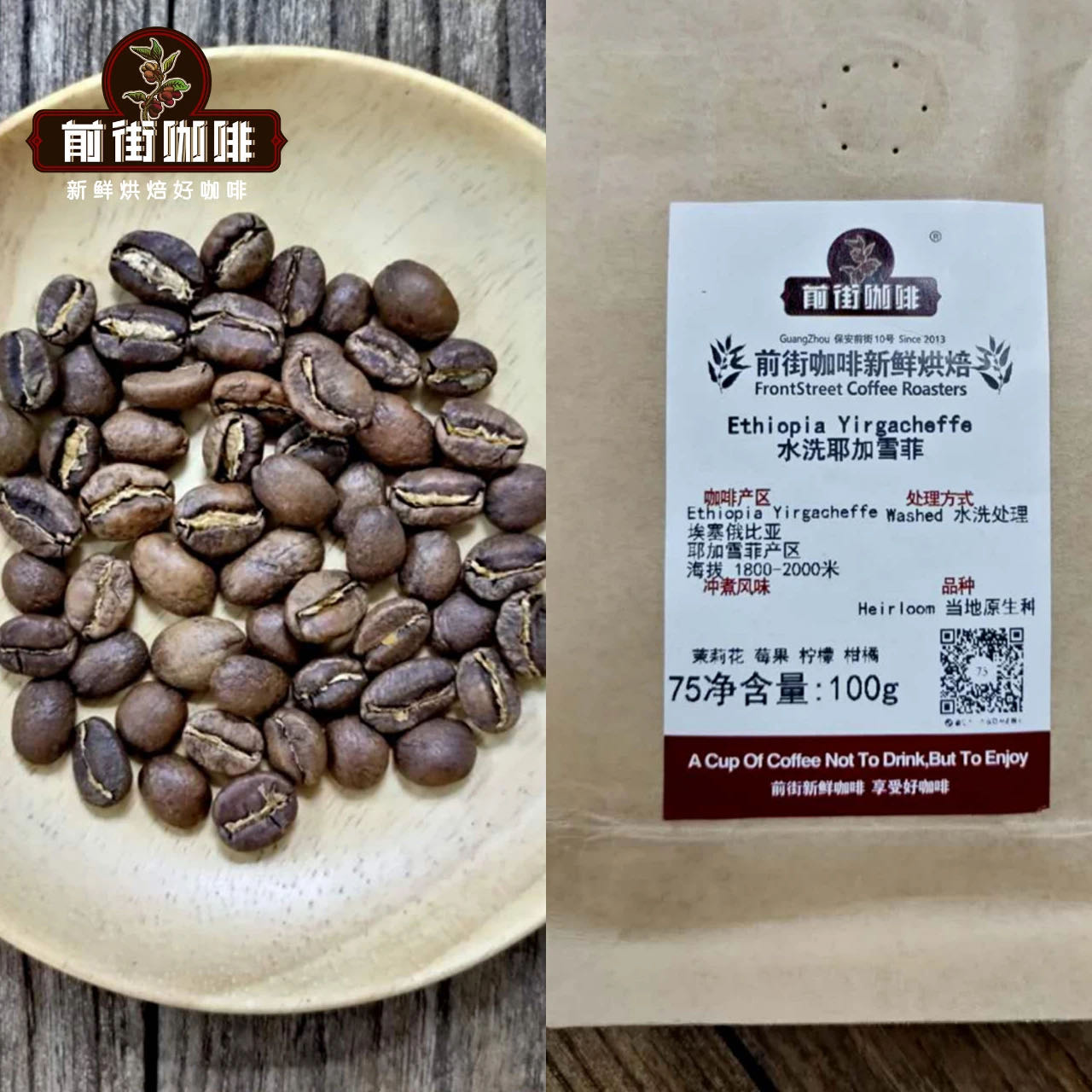
According to Qianjie, Ethiopia has nine coffee producing areas: Yejia Shefei, Sidamo, Limu, Hara, Kimma, Iruba, Kimbi, Tiebi Bebeka, Tana Lake, Wenago, Gelena/Abaya. One of the most famous can be said to be the Yega Shefi region. Then let's briefly talk about the characteristics of these nine production areas.
1. Yejia Xuefei (fine production area): altitude 1,800 ~ 2,000 meters (pastoral coffee system)
Yegashefi is affiliated with the Sidama region and is separated due to its unique flavor. In addition to the town of Yejia Shefei, it also includes three sub-producing areas around Wenago, Kochere, Gelena and Abaya. Therefore, Yirgacheffe A, Wenago A, Kochere A, Gelena/AbayaA will be more expensive than the namesake B in the new Yergacheffe grading system.
The so-called Ye Jia Xue Fei flavor refers to the rich jasmine fragrance, lemon fragrance, peach, almond sweet fragrance and tea fragrance. Front Street Coffee thinks that it is most appropriate to describe it with "flowers in full bloom". Traditionally, Yejia Shefei adopts the oldest sun treatment method, but in 1972, Ethiopia introduced Central and South American washing technology in order to improve the quality of coffee, making the jasmine fragrance and citrus fragrance of Yejia Shefei clearer and brighter. Qianjie Coffee thinks that the most essential difference between water washing method and sun treatment method is that washing method presents the most basic flavor of coffee and can most intuitively reflect the special flavor of the producing area. The sun rule adds sweetness and fermentation to this base flavor.
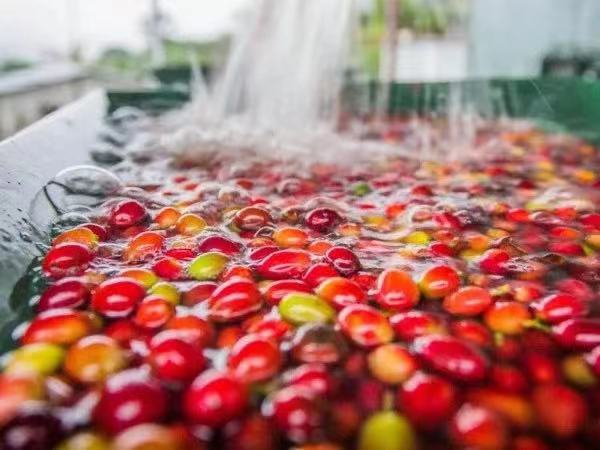
Because of the introduction of water washing, Yega Xuefei has become the representative of fine coffee in the world. since the 1970s, this area has become the most popular water-washed bean producing area in Ethiopia. However, in the 21st century, the sun technology has gradually improved, and amazing sun beans have been introduced frequently. This is due to Baghi, a coffee trader in Yejasuefei. Because he misses the traditional flavor of sun-dried beans, the sun-drying technology is gradually replaced by water washing, so he improved the treatment of sun-dried beans to improve the flavor and reduce the proportion of defects, and launched three very famous Yejasuefi sun-dried beans, namely, Idido Misty Valley, Beloya and Aricha.
In addition to washing and sun treatment, there are other treatment methods, such as red honey, anaerobic and so on. Qianjie Coffee has tested a red honey Yega Chevy before the cup, which adds layers to maintain the original basic flavor. The taste is lighter than the sun Yega Chefe, and thicker than the water washed Yega Chuefei.
Qianjie Coffee Essex Tintin Cooperative Coffee beans
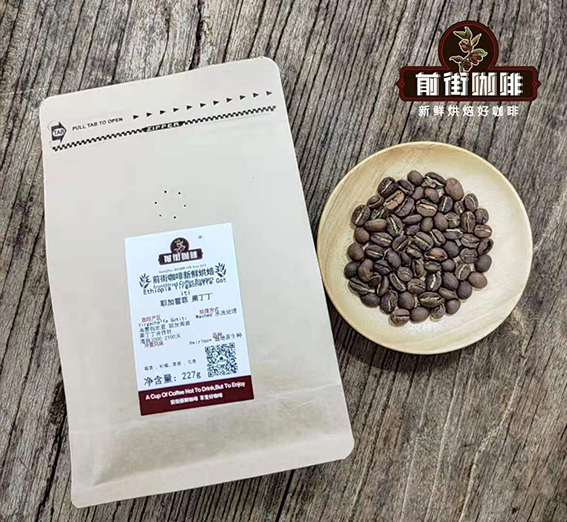
Country: Ethiopia
Producing area: Yega Xuefei
Altitude: 1900-2300m
Variety: native species
Treatment: washing treatment
Flavors: tropical fruits, cream, honey, berries, citrus
The origin of the name is actually because this coffee cherry is produced by the Guotintin Cooperative. According to Qianjie, the Guotintin Cooperative was originally part of the Waka Cooperative of the YCFCU of the Yega Sheffield Alliance. It became the Guotingding Cooperative in 2012 and now has more than 300 small farmer members.
Guodingding Village was the first independent village area, and many small farmers were also members of the Waka Cooperative, so the technology of producing coffee was not to mention. Guodingding Cooperative is known as the last piece of pure land of Yejia Xuefei, so the raw bean treatment is also a very traditional treatment (water washing and sun treatment).
Front Street Coffee Essex plus Chevy Red Honey Cherry Coffee beans
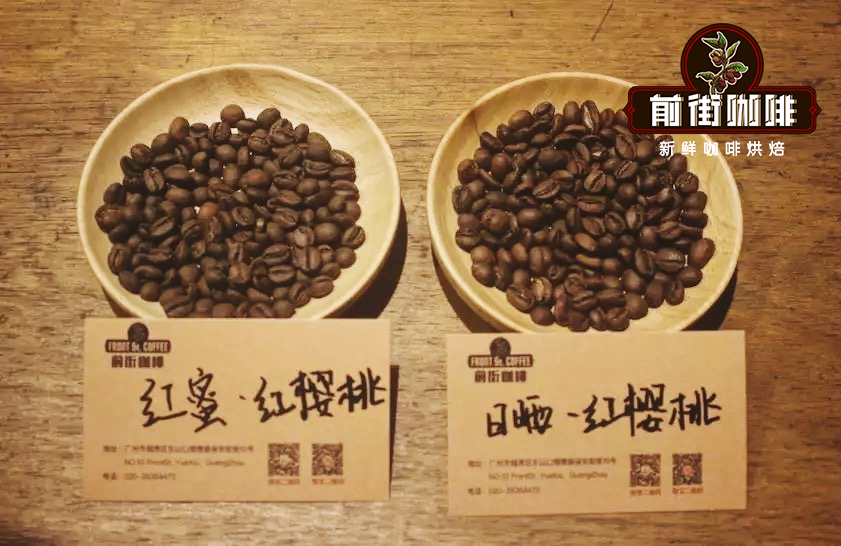
Country: Ethiopia
Producing area: Yega Xuefei
Altitude: 2000-2200m
Variety: local native clock
Treatment: red honey treatment
Flavor: Jasmine, citrus, honey, berries, almonds, fermented red wine
In fact, the so-called honey treatment refers to the process of making raw beans with mucous membrane for sun-drying. After the outer pulp of the coffee bean is removed, there will be a layer of sticky jelly. The traditional washing method washes it away with clean water, but this direct drying method has been born because of the limitations of water resources in some high-altitude areas.
Pectin mucous membrane is the part with the highest content of coffee fructose, and it is also an important part of coffee fermentation. It can be said that 80% of this part determines the supply of nutrients in the process. Yellow honey retains 60% pectin, red honey retains 75% pectin, and black honey hardly removes pectin.
Front Street Coffee Essex plus Sheffield Sun Red Cherry Coffee beans
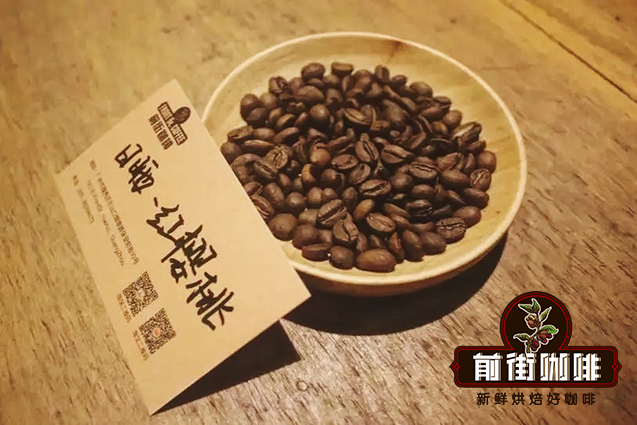
Country: Ethiopia
Producing area: Yega Xuefei
Altitude: 2300m
Variety: native species
Treatment: sun treatment
Flavor: berries, lemons, strawberries, fermented wine
Sun treatment is the oldest and most primitive treatment of coffee beans. The red cherry in the sun in the front street will put the whole coffee cherry with intact pulp and skin in the elevated shed for sun treatment to isolate contact with the ground and prevent the soil odor caused by direct exposure. After more than two weeks of sun exposure, store the dark brown coffee fruit and wait for the whole flavor to be ripe. Before shipment, the processing plant will take out the coffee beans from the coffee cherries. After this kind of sun treatment, the bean has low acidity, obvious sweetness and alcohol thickness, but its cleanliness is not as high as that of washing treatment.
Yao, a red cherry coffee bean in Qianjie, mentioned an Ethiopian red cherry project, so what is the red cherry project?
Red Cherry Project:
The Red Cherry Project, jointly launched by Dutch trader Trabocca and local Ethiopian farmers, aims to improve the quality of small-scale farms and pick coffee fruits, not only the fruits with high maturity of full red, but also by hand, but this is only the most basic requirement. There are also corresponding requirements for the treatment of coffee beans.
The red cherry project is also a reinforcing method, which makes the farm pay more attention to the process of selecting beans, and the prices of these coffees are also relatively high. the main producing areas are Yega Sheffield, Sidamo, Penga Forest, Lekanti, Ken Bata, Irubaba, Hara, Lim and so on. These are unique flavors and can fully show the flavor of Ethiopian coffee. However, Qianjie Coffee believes that, in fact, all boutique coffee is produced in the way of the red cherry project, but the unique term of red cherry coffee still belongs to Ethiopia, and the produced red cherry coffee will be printed with Trabocca on the sack.
2. Sidamo (boutique producing area): 1400-2200m above sea level (pastoral coffee system)
Sidamo coffee, which is delicately washed or sunburned, is usually sweet, and the strawberry flavor is loved by many coffee lovers and is worth as much as Yega Chuefei. The varieties of Sidamo and Yega Xuefei are similar, with medium-sized beans but also small seeds of dwarf plants, which farmers often sell separately. One of the most popular coffee beans in Sidamo is Sakuran, which has been a blockbuster since it was unveiled in Ethiopia's raw bean competition TOH in 2017, breaking Rosa's monopoly in the brewing competition and becoming the only coffee that can compete with it. Huakui comes from Humbera, a sub-production area of Guji, which, like Yega Xuefei, originally belonged to Sidamo and later became independent because of its outstanding flavor, but now when it comes to Guji, it is still generally default to Sidamo.
Front Street Coffee Essex Damo Huakui Coffee beans
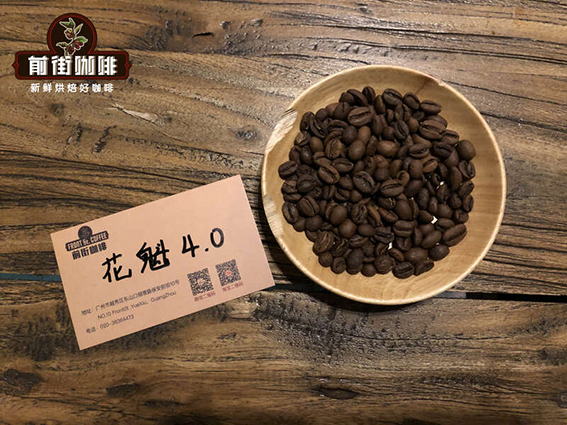
Country: Ethiopia
Producing area: Sidamo
Altitude: 2250-2350m
Variety: native species
Treatment: sun treatment
Flavor: berries, scented tea, honey, lemon, black tea
Sakuran is called Sakuran because in 2017, Ethiopia's DW Raw Bean Company sent their coffee beans to TOH (the Taste Of Harvest), a competition hosted by the African Coffee Association, and the tanning batch won the championship of TOH Ethiopia. This batch of raw beans, in the capacity of the champion, is named "Sakuran".
3. Lim (boutique producing area): 1200m to 2000m above sea level (pastoral, forest, semi-forest, planting farm coffee system)
The output is relatively small, and it is mainly exported to Europe and the United States, but it is not easy to buy in Taiwan, but it is very popular in Europe and the United States. there are three treatment methods: washing, tanning and semi-washing. Lim's body will be significantly less viscous, and the floral and citrus flavors will be inferior to those of Yegashifi and Sidamo, but with a hint of grass and black sugar, and bright acidity.
4. Hara (boutique producing area): 1500 to 2400 meters above sea level (pastoral coffee system)
Hara exclusive sun, is an ancient city in the east, but the city does not grow coffee, the so-called Hara coffee refers to the coffee produced by Haraji high and low in the Great Hara area. As the annual rainfall is only 1000 mm, all of them are treated in the sun. Hala caffeine is famous for its special aroma, which is typical of the early morning flavor in ancient times. If Hara's defective beans can be picked out, it is easy to drink berry aromas with slightly pleasant fermented aromas. However, due to various factors, the quality of Hara coffee is unstable in recent years, and the grading system is not true, so you must test or try it when you buy it.
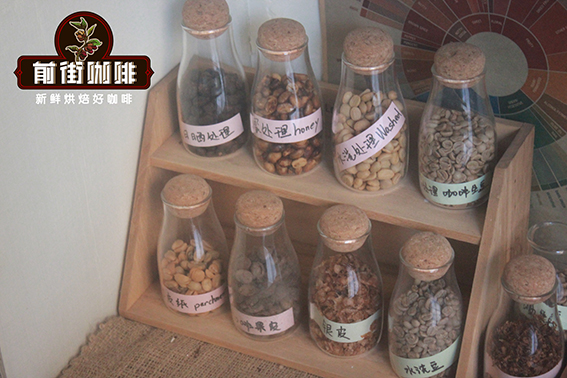
5. Jinma (bulk commercial bean producing area): 1350-1850 m above sea level (forest / semi-forest system)
Jinma is the capital of Kafa Forest or Kafa province. The English spelling is very messy. Most of the maps are jimma, but the coffee sacks are spelled into Djimmah. This is the largest coffee producing area in Ethiopia, accounting for 1 per cent of exports. Jinma is the distribution center of Kafa in this area. Farmers are used to picking and transporting forest areas to Jinma, and then mixing hundreds of varieties together to sell as commercial beans, resulting in the aroma of many delicious varieties being masked.
Water washing boutique Jinma, although there is no Yega Xuefei orange fragrance and flower rhyme, the taste spectrum is also quite clean, similar to the Central American boutique. Commercial-grade boutique Jinma is very common in Taiwan, and luckily you can buy high-quality and inexpensive Jinma, which can drink the fragrance of lemon peel, which is not inferior to that of Sidamo. Overall, Jinma has a better flavor than Brazil's bulk commercial bean Santos, making it a good medium-to-low-priced formula bean.
6. Yilu Babo (bulk commercial bean producing area): altitude 1350-1850 (forest / semi-forest coffee system)
This area is located in the west of Ethiopia, bordering Sudan, and is the most convenient producing area in the west. the complexity of coffee gene is only second to that of Kafa forest, beans are obviously larger than those of Yegashifi and Sidamo, low acidity, good viscosity and balanced flavor. Most of the coffee here is transported to Jinma to be mixed, rarely sold independently.
7. Jinbi, Lehchuti (bulk commercial bean producing area): altitude 1500-1800 (forest / semi-forest coffee system)
There are sun-washed and water-washed beans in this area, long-bodied beans similar to Hara, and a few boutique grades are quite popular in Europe and the United States. Most of the Hara, known as the poor, has a sour and fruity flavor due to Yilu Babo, with a bright flavor.
8. Tiebi, Bebeca (bulk commercial bean producing area): 500-1900m above sea level (pastoral / forest / semi-forest coffee system)
The two producing areas are very close. Tiebi has an enterprise-managed coffee plantation in the north of Bebeca. In recent years, it has promoted the pastoral system and increased farmers' income, with an annual output of about 3000 tons. Both places have wild coffee, the yield is not high, the flavor is very different from Hara and Yega snow coffee, low acidity is the biggest feature, suitable for formula beans, sun and water washing.
9. Tana Lake (alternative producing area): 1840 meters above sea level (forest system)
Monastery coffee, the annual output of the surrounding forest coffee is very small, less than 10 tons, in fact, can not be called the producing area, the lake area is full of Orthodox monasteries, churches, religious murals and myths, creating the most "divine" coffee in the world.
European monastic academics opened up a local coffee growing industry, which was later run by coffee communities or cooperatives in villages around the town. There are no special plantations here, and coffee trees are naturally scattered in the forest and countryside. During the harvest season, the Ethiopian Coffee Trading Company goes to town to buy coffee beans collected by farmers.
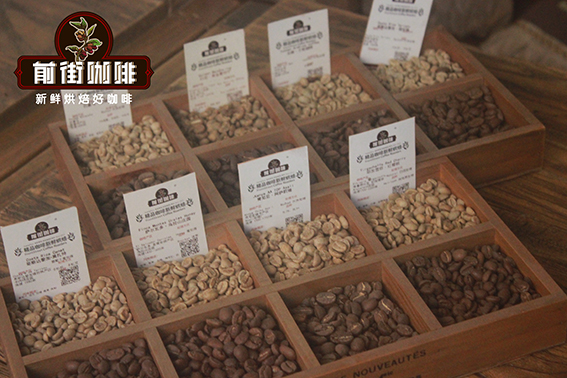
Ethiopian coffee varieties
According to Qianjie, the variety of coffee cherry in Ethiopia is also very rich. Nearly 2000 varieties (including 1927 native varieties and 128 imported varieties) have been recorded. If you look at the bean type, Ethiopia's coffee variety is "Grand View Garden", which has everything, long, short, thin and fat, among which long coffee beans are found in all coffee growing areas in Ethiopia. From the actual proportion, Jimma in the west Including Limmu and Kaffa, there will be more varieties of long particles, but less in Sidamo or Yega Sheffield.
Small granule species, the shape is relatively round, the bean body is very small, mostly between 14-15 orders, this variety should be the most familiar to us, they can often be seen in Sidamo and Yegashiri, Qianjie has also been seen in a harrar sample, also seen in Jimma local coffee raw beans, compared with other areas, Sidamo and Yega Sheffield and surrounding Arsi There are many native varieties of this kind of small particles in Guji producing areas.
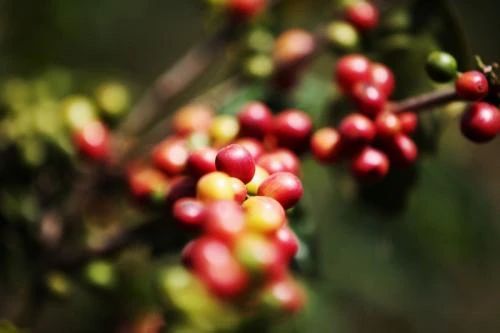
Grading of Ethiopian coffee beans
ECX (Ethiopian Commodity Exchange Ethiopian Commodity Exchange) defines the defect rate of coffee beans according to its classification, which is G1 and G2 respectively. G1 represents less than 3 defective beans per 300g raw beans, G2 represents 4-12 defective beans per 300g raw beans.
In addition, there is a graded definition of flavor evaluation. G1 and G2 coffee beans are evaluated by SCA American Fine Coffee Association Cup, and the coffee beans are rated as Q1 with more than 85 points and Q2 with 80-84.75 points.
Kenya
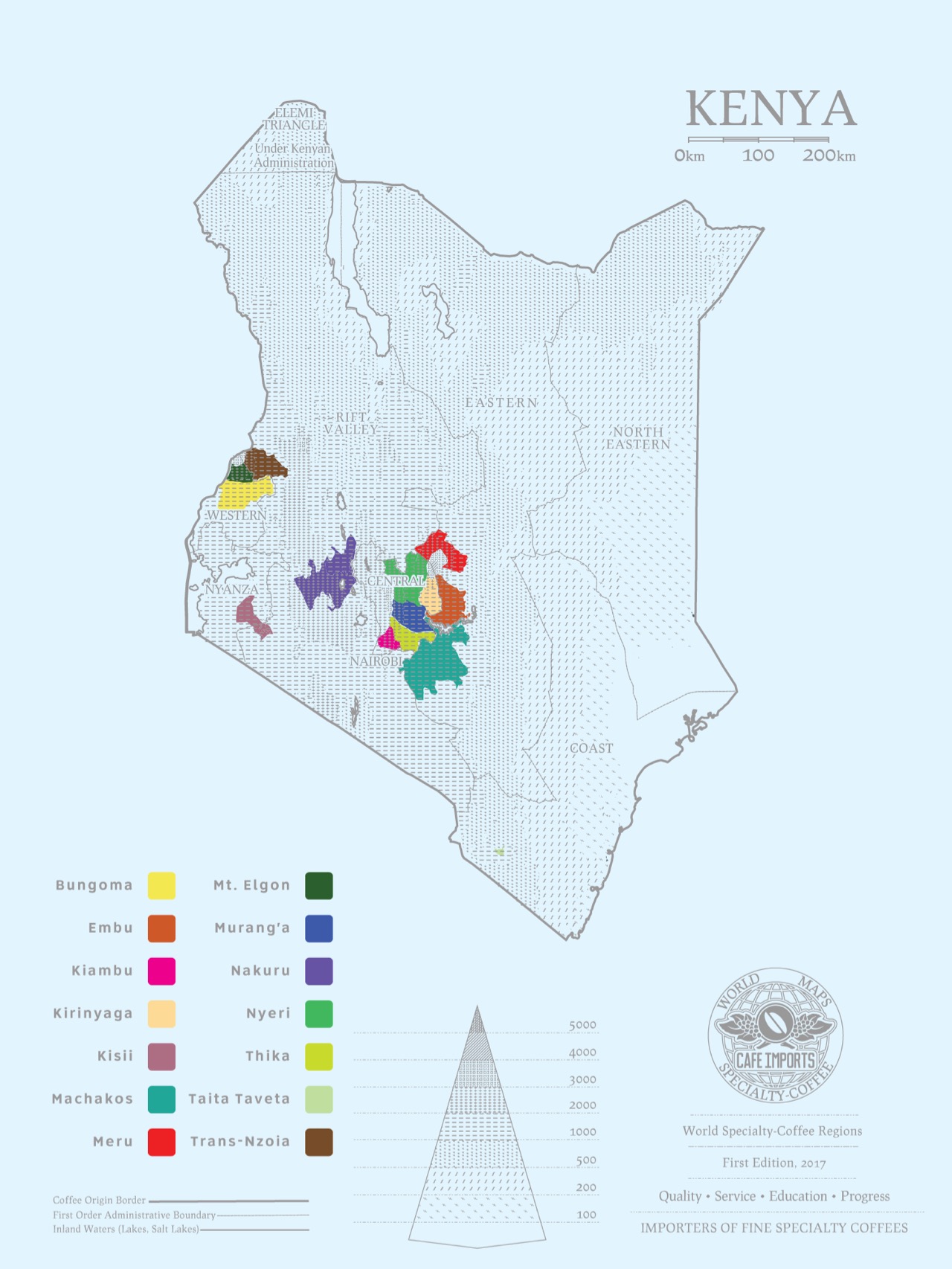
Kenyan coffee is mostly grown at an altitude of 1500m, 2100m, and is harvested twice a year. As mentioned in the previous street article, its main feature is a distinct fruit aroma, and the common fruit aroma is virgin fruit. Kenyan coffee has a multi-layered taste and juice acidity, perfect grapefruit and wine flavor, moderate mellow, is the favorite of many people in the coffee industry. Kenyan Coffee became more famous with the sensation of the Hollywood movie OutofAfrica.
And according to Qianjie, it is illegal to cut down or destroy coffee trees in Kenya. The buyers of Kenyan coffee are world-class high-quality coffee buyers, of course, Qianjie knows that no country can grow, produce and sell coffee as continuously as Kenya.
All coffee beans in Kenya are first acquired by the Kenya Coffee Commission (CoffeeBoardofKenya, or CBK), where they are identified, rated, and then sold at weekly auctions, which are no longer graded.
Kenyan coffee producing area
According to Qianjie, the main coffee producing areas in Kenya are six major coffee producing areas, including: Thika, Kirinyaga, and the west side of Mount Kenya (Mt. Kenya West, Nyeri, Kiambu, Muranga. The harvest periods of the six major producing areas are all from October to December (the main production season) and from June to August (the by-product season).
Sika (Thika)
Sika is a small town in Nairobi, the capital of Kenya. There are many coffee fields around Nairobi, and Sika is an industrial town, but surrounded by agriculture and waterfalls. There are about 2000 farmers in Sika. The planting history of Kenyan Sika coffee can be traced back to the end of the 19th century. Coffee trees were introduced from neighboring Ethiopia in the north and improved by their own varieties. At present, the common varieties are Bourbon, Kents, SL34, SL28, Typica and Riuri 11. Now about 90% of the coffee varieties are SL34 and SL28. The new variety Batian published in 2007 has not been planted in large quantities. The flavor of the region has bright acidity, thick berry juice and honey sweetness.
Altitude: 1550mi 1750m
Variety: sl-28,sl-34
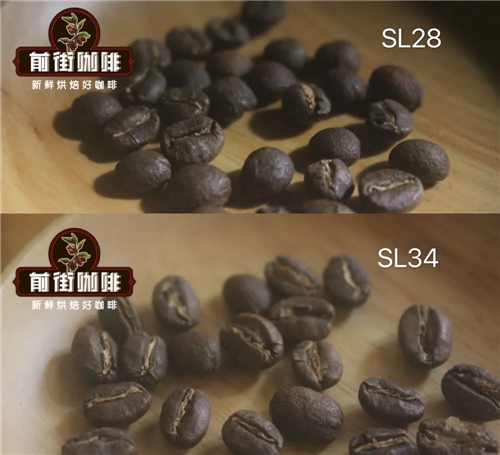
Qilin Yajia (Kirinyaga)
Located on the hillside of Mount Kenya, close to Nyeri, Kirin Yaga is famous for its strong, rich and solid-tasting coffee. Together with Nyeri, it is recognized as the two best producing areas in Kenya. Most of the producers in this area are small coffee farmers who join the cooperatives, while the cooperatives play an integrated role, providing washing plants, and coffee farmers send the coffee fruits to the cooperative processing plants for processing. The flavor of this area has bright acidity, moderate grease and delicate sweetness.
Altitude: 1300 to 1900 m
Varieties: SL-28, SL-34, Ruiru11, Batian.
The west side of Mount Kenya (Mt. Kenya West)
The western side of Mount Kenya includes the Bungoma district of Kisii and Mount Elgon. Chesi is located in southwestern Kenya, not far from Lake Victoria, is a relatively small producing area, most coffee beans come from free small-scale producers of common cooperatives. The coffee flavor in this area is very different from that in the central region, which has roasted nuts and soft acidity and is popular with buyers who do not like bright acidity.
Altitude: 1450 to 1800 m
Varieties: SL-28, SL-34, K7
Nieli (Nyeri)
Nieli, located in central Kenya, is home to the extinct volcano Mount Kenya. The red soil in this area breeds the best coffee in Kenya. Agriculture is extremely important here; coffee is the most important crop. Common cooperatives made up of small farmers are more common than large manors. There are two harvests in this area, but coffee from the growing season is usually of high quality. With a bright berry juice, citrus and faint floral aromas, the coffee beans grown here make Kenyan coffee famous all over the world.
Altitude: 1200-2300 m
Varieties: SL-28, SL-34, Ruriu11, Batian
Qianbu (Kiambu)
This producing area in central Kenya has the highest coffee growing area in the region. However, some coffee trees at high altitudes can get Dieback and stop growing. This producing area is named after the town of Nakuru. Coffee is grown here in the form of both manors and small farmers, but the yield is relatively small.
Altitude: 1850-2200 m
Varieties: SL-28, SL-34, Ruiru11, Batian
Mulanga (Muranga)
The Muranga producing area belongs to the Central Province, where there are about 100000 coffee farmers. This inland producing area was the place of settlement chosen by the first missionaries because Portugal banned them from living in coastal areas. It is also another producing area that benefits from volcanic soil, with more small coffee farmers than manors. The coffee in this area has bright acidity and thick fruit juice to the touch.
Altitude: 1350 to 1950 m
Varieties: SL-28, SL-34, Ruiru11, Batian
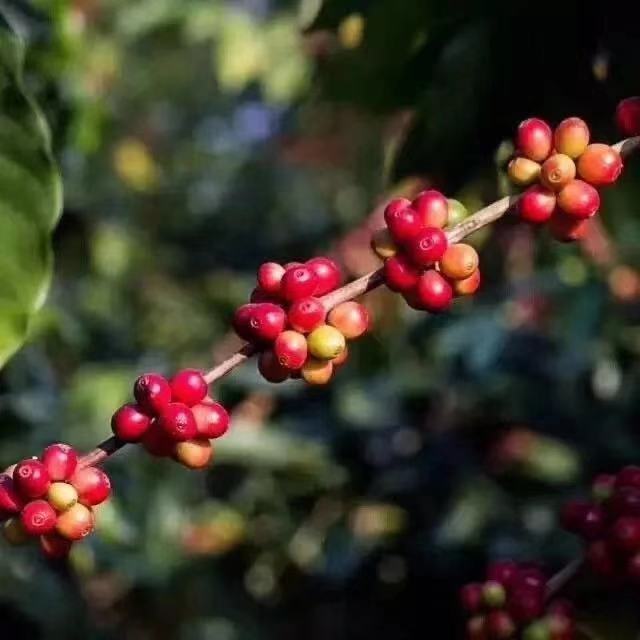
Kenya Coffee Bean grading system (by size)
AA grade with excellent quality (flavor, taste) in AA Plus (AA+) cup.
AA particles: size (Screen Size) 17-18 mesh.
AB particles: size (Screen Size) 15-16 mesh, accounting for the majority of output.
C particles: those whose size (Screen Size) is smaller than AB.
TT from AA and AB beans: lighter beans blown out with an airflow filter.
T from Class C beans: lighter beans blown out with an airflow filter.
E Elephant Bean: two beans into one of the large mutant beans, also known as elephant ear bean Elephant ear.
PB Peaberry: classified by appearance, independent of flavor weight.
For the raw coffee beans of AA grade and AB grade, the special classification of cup test results (not officially recognized by Kenyan countries, made by exporters) is added, and the order from high to low is TOP, PLUS (+) and FAQ. The Kenyan Asalia flavor level on the front street coffee bean list has reached the TOP level, but as mentioned earlier, this is not an official grading system, and not every coffee bean collected in front street coffee from several Kenyan producing areas has a flavor grade, so there is no need to worry too much about this piece, generally reaching the AA level and AB level, the flavor is actually very high quality by default.
Here are all the Kenyan coffee in front of the street.
Front street coffee Kenya Sassini pb coffee beans
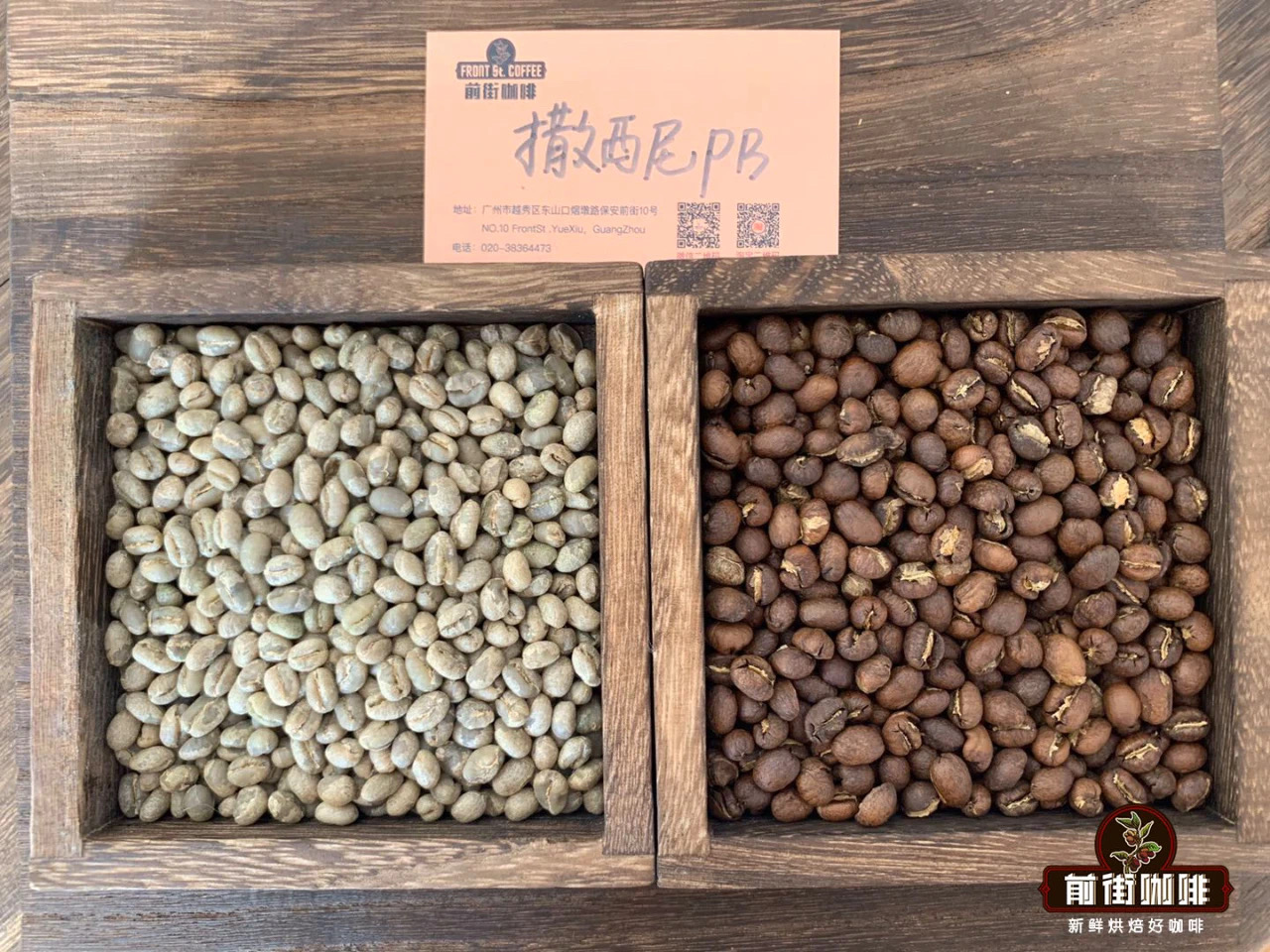
Country: Kenya
Producing area: Sassini
Altitude: 1900m
Variety: SL28,SL24,riuru
Treatment: washing treatment
Flavor: tomatoes, fruits, berries
Sassini Manor is located in the KIAMBU area around Mount Mountain Kenya, about 1800 meters above sea level. It has beautiful scenery, pleasant climate, sufficient light and superior soil conditions. It is a fertile acidic red soil with a loose soil, deep soil layer and good drainage. The PH value is between 5.5 and 6.5.
Sassini Co., Ltd. was founded in 1952 and is also one of the first coffee and tea companies established after independence in Kenya. It has been certified by UTZ, Rainforest Alliance, Kenya Bureau of Standards Diamond mark and so on.
And Qianjie believes that high-quality Kenyan coffee has a bright sour taste and intoxicating fruit sweetness. The sweet and sour wine has a large amplitude, a refreshing and sweet finish and a hint of blackcurrant aftertaste.
Front street coffee Kenya Azaria coffee beans
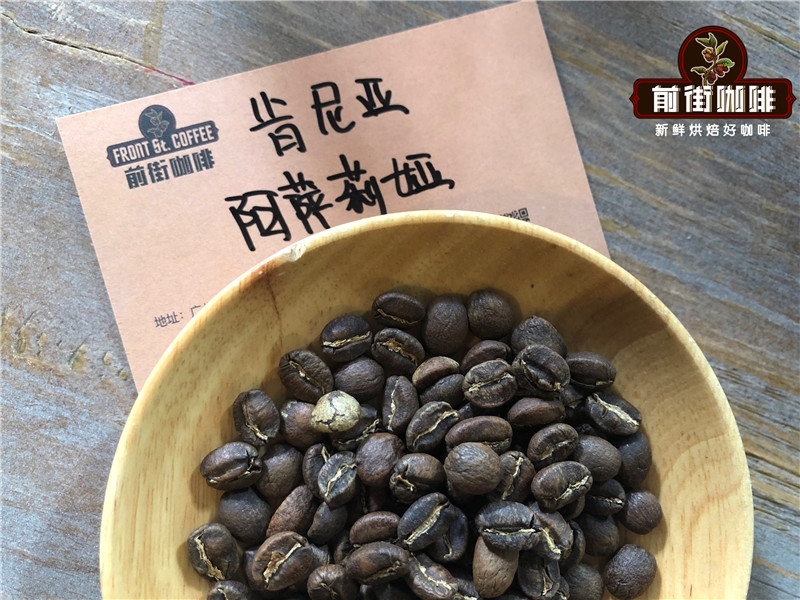
Country: Kenya
Production area: Asali (Honey processing Plant)
Altitude: 1550-1750m
Variety: SL28,SL34
Treatment: washing treatment
Flavor: Sydney, black plum, brown sugar, virgin fruit, Brin
As far as Front Street knows, SL-28 and SL-34 are owned by Guy of Scott Laboratories. Guy Gibson led the research project to produce two of the 40 experimental varieties, while the bourbon variants (SL-28) and (SL-34) have always been the winners of the expert cup test Narobi auction.
3. Burundi
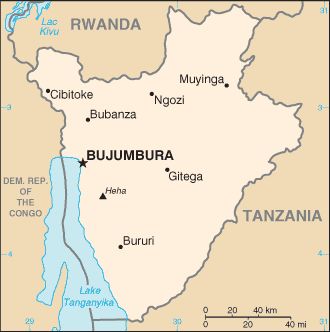
History of Burundi coffee beans
Burundi is known as the heart of Africa. It is a landlocked country in Africa, located on the steep East African Rift Valley, with complex terrain. It is the crossroads of Central Africa and East Africa. It is also the watershed of the Nile River System and Congo River System, two major rivers in Africa. It is known as the "Heart of Africa."
Blondie began to grow coffee in 1930. It was introduced by Belgium, a colonial country. The local people had no habit of drinking coffee. Many farmers resisted planting in the early years. Under the exploitation of the colonial government, it is conceivable that the quality of coffee in that year would not be too good. This, combined with Burundi's long-standing ethnic problems and producers 'mistrust of buyers, has severely hampered coffee quality improvements.
Since 1993, project guidance from the World Bank and the International Monetary Fund has brought about a turnaround in the coffee industry in Burundi, but the assassination of the first Hutu president in October of the same year and social unrest have put the development of the coffee industry on hold. It was not until September 2006, when the Tutsi party and rebels signed a ceasefire agreement, that the situation in Burundi gradually stabilized and the coffee industry began to enter a new stage of development.
The World Bank-sponsored coffee project has two main strategies: one is to expand the coffee washing plant, and the other is to increase the total amount of coffee planted. Before 2007, all washing plants were under state control, with poor efficiency and uneven quality of raw beans. This was the year when the government allowed private washing plants to be set up, which was also a real turning point for the coffee industry in Burundi. In 2011, Coffee Excellence held its first coffee competition in Burundi, which attracted international attention and farmers realized that growing coffee paid off.
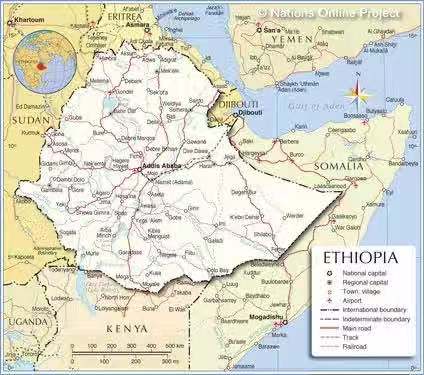
Burundian coffee bean producing area
There are five main coffee bean producing areas in Burundi, namely Cayanza Kayanza, Ngoji Ngozi, Muyinji Muyinga, Qirundu Kirundo and Chirimilo Kirimiro.
Cayanza Kayanza, Ngoji Ngozi
Both Kayanza and Ngozi belong to Buyenzi of Buyongji, and their elevations are between 1700 and 2000m. The main rainy season begins in March and April, and the dry season begins in July after harvest. The average annual temperature is 18-19 ℃, and the low temperature at night continues into the early morning, which is the main reason for the compactness of bean fragrance and bean body in these two producing areas.
Coffee from Cayansa scored a high score of 91.09 in the 2015 COE competition. Ngoji's output is less than that of Cayanza, but it has also shown great potential for quality in recent years. In the 2015 COE competition, its best batches scored 88.92%, while other batches from the production area also scored more than 85%.
Odd leap degree (Kirundo)
The production area is quite close to the border of Rwanda, the coffee production is low, and the elevation is between 1400 and 1700m. Due to the influence of the Cayansa production area, the production of high-quality products has gradually approached, and some washing methods have won the final results in the COE competition.
Muyinji (Muyinga)
A coffee-growing region in northeast Burundi bordering Tanzania. With an average altitude of 1800 meters, the coffee flavor is slightly easier than that in the Cayansa producing area, which is not as rich as that in the Yangza producing area.
Chili Milo (Kirimiro)
Located in the mountains of central Burundi, the average temperature is 12-18 °C. The annual rainfall is about 1100mm, which is lower than that in other producing areas. In addition to COE award-winning coffee, this producing area also has a professional coffee laboratory that focuses on the quality control of exported coffee.
Burundian coffee varieties
Generally speaking, Burundian coffee is mainly bourbon, and there are some other varieties (such as Jackson and Blue Mountain). According to Qianjie, its cultivation varies from 700 to 2700 meters above sea level, high altitude will produce brighter sour and lemon flavors, while flavors such as passion fruit, pineapple, flower and honey, its quality can be as high as 86 points or higher, while low-altitude coffee has a thinner texture, with more chocolate and hazelnut flavor.
Treatment of Burundian coffee beans
Burundian coffee beans are mostly bourbon varieties as are neighboring Rwanda. Today, more than 800000 of Burundian families rely on coffee cultivation for a living, mostly in small-scale coffee plantations, planted at intervals from other crops, artificially planted, without mechanized equipment, and coffee is mainly treated by washing, with a small amount of sun-dried beans in recent years.
There are two methods of washing treatment in Burundi. One is hand-washed by farmers themselves and then handed over to the washing plant, which is called manual washing and marked as "washed". The other is to directly hand over the fruit to the washing plant and mark it as "fully washed".
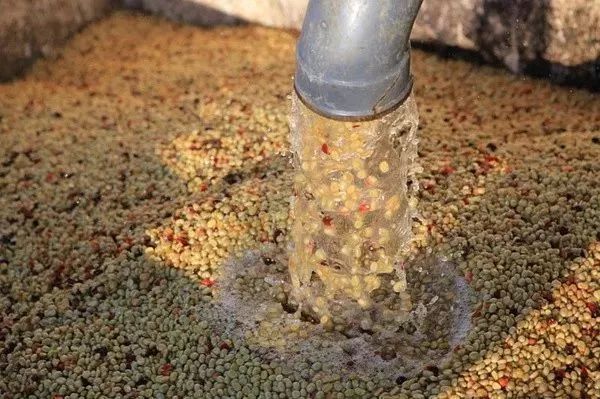
Manual washing is completely manual removal of peel, pulp and pectin. Qianjie Coffee mentioned earlier that producers' mistrust of buyers, including mistrust of the processing plant, led to the Cajun Association thinking that the purchase price of the treatment plant was not true, and the price of directly trading the fruit was not good enough. I would rather handle the coffee myself and fight for more bargaining space with the processing factory. But the problem is that most farmers rely on bare hands, lack the use of tools, and often work on dusty roadsides, which inevitably affects the quality of coffee. However, since the opening of the spunlace treatment plant for privatization, the Burundian government has encouraged the harvest to be handed over to professional treatment plants.
Burundi has also developed a water washing treatment similar to that of Kenya-double water washing and fermentation. First, put the harvested fruit into a large tank, select the fruit with good density by buoyancy, then remove the peel and pulp by machine, enter the fermentation tank for about 18 hours, pour the fermented fruit into clean water the next day, and continue to ferment for 18 hours. a total of about 36-48 hours. Then wash the fruit clean, remove the pectin layer softened by hairspray, and finally enter the drying process. The first stage of drying should be shaded and air-dried to avoid direct exposure to hot sunlight, the moisture content will be less than 40%, move to the scaffolding for natural sun exposure, and the moisture content will reach 11%.
Here are all the Burundian coffee beans in front of the street.
Front Street Coffee Burundi Heart of Africa Coffee beans
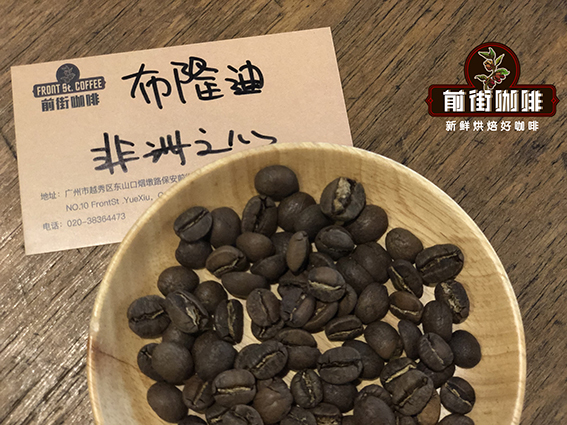
Country: Burundi
Production area: Bubanza
Altitude: 1400-1700m
Variety: bourbon
Treatment: water washing
Flavor: kumquat, lemon, dried fruit, caramel, light acid
4. Rwanda
Rwanda Coffee
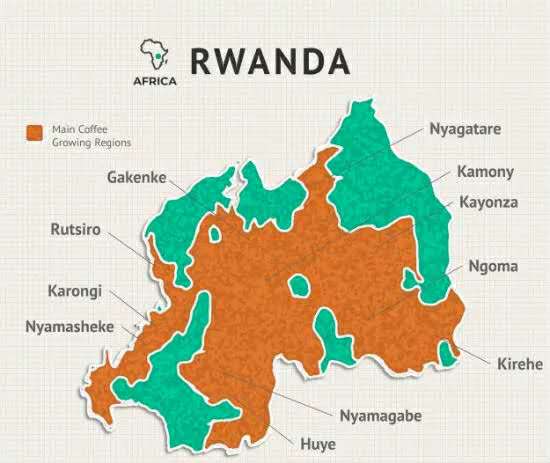
Rwanda, located in the central African region, is a standard landlocked country, and its neighboring countries are all big coffee producers. At the beginning of the 20th century, Rwanda was successively colonized by Germany and Belgium, and German missionaries were the first to introduce coffee. Coffee production increased significantly during the colonial period, but the exploitation of labor, suppression of the prices of coffee crops and high export taxes made the quality of coffee beans not ideal, which was also a normal phenomenon in the development of commercial coffee at that time. Qianjie Coffee was also found in Brazil, which also experienced colonial rule, and the coffee beans once produced were heavy in quantity rather than quality, resulting in a reputation for poor coffee quality for some time.
It was not until the independence of Rwanda and the establishment of the first official coffee organization, OCIR, that coffee bean production was gradually valued. Coffee production in Rwanda continued to grow from the 1960s to 1980s and reached an unprecedented peak in 1986, until the beginning of domestic political instability (the Rwandan genocide) in the early 1990s. Qianjie Coffee has also recently collected several batches of Rwandan coffee beans from different producing areas, one is the rapid development of the Rwandan coffee industry and the guarantee of coffee quality, and the other is that Rwanda has gradually formed an obvious flavor of the producing areas, which is different from Ethiopia and Kenya.
Cultivation conditions of coffee in Rwanda
Rwanda has a temperate and tropical plateau climate, with an average temperature of 24.6-27. Degrees Celsius, the temperature is lower than the typical equatorial countries, but coffee is grown in the mountainous west and other places, the temperature is lower than the eastern low-lying areas, the temperature difference is also larger. For example, the average elevation of Lake Kivu in the north is 1463 meters, and the average daily temperature is 22. 5%. Degrees Celsius, coupled with fertile volcanic soil, is very suitable for growing coffee.
Rwanda Coffee processing method
According to Qianjie, it is understood that Rwanda coffee is mainly treated by water washing, which will flotation the picked coffee fruit to remove the low density coffee fruit, then remove the peel and pulp, then put the pectin beans in the pool to ferment, wash the pectin layer with clean water after fermentation, and finally dry the coffee beans, reducing the water content of the coffee beans to about 11% to 13%. Qianjie Coffee believes that washed coffee has higher acidity, good cleanliness and stable overall performance.
Coffee producing area of Rwanda
The producing areas of fine coffee beans in Rwanda are mainly distributed in the south and west, the Huye mountains and Nyamagabe areas in the south have some floral and citrus flavors due to their high altitude, while the Nyamasheke area on the bank of Lake Kivu in the west is rich in high-quality coffee with rich, fragrant and juicy taste. Although there is little difference in flavor between producing areas, there are still some differences in fine taste. People often ask Qianjie coffee how to distinguish it, and they always think that flavor is very metaphysical. In fact, Qianjie coffee also goes through a lot of flavor cognitive training in order to distinguish the coffee flavor of different producing areas, which takes time, energy and persistence.
Coffee varieties grown in Rwanda
More than 90% of Rwandan coffee varieties are bourbon varieties introduced in the early days, as well as mixed varieties of the bourbon family, which are resistant to natural disasters. Originally grown on the island of Reunion, bourbon was introduced to Brazil in 1860 and rapidly expanded northward throughout Latin America. Several Latin American bourbon beans currently harvested in front street coffee include Brazilian red bourbon, Brazilian yellow bourbon and Colombian pink bourbon.
Front Street Coffee Rwanda Gesak Coffee beans
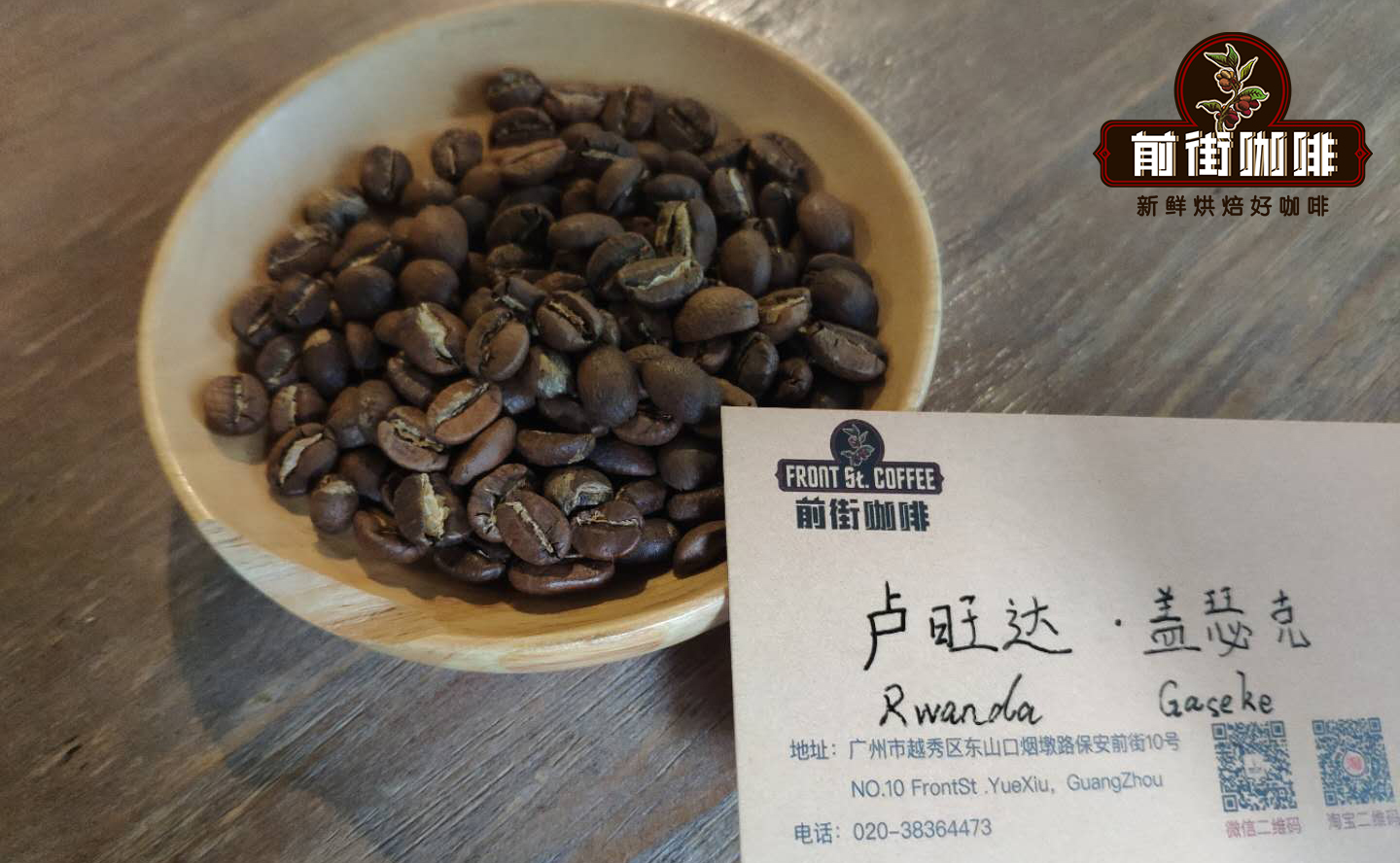
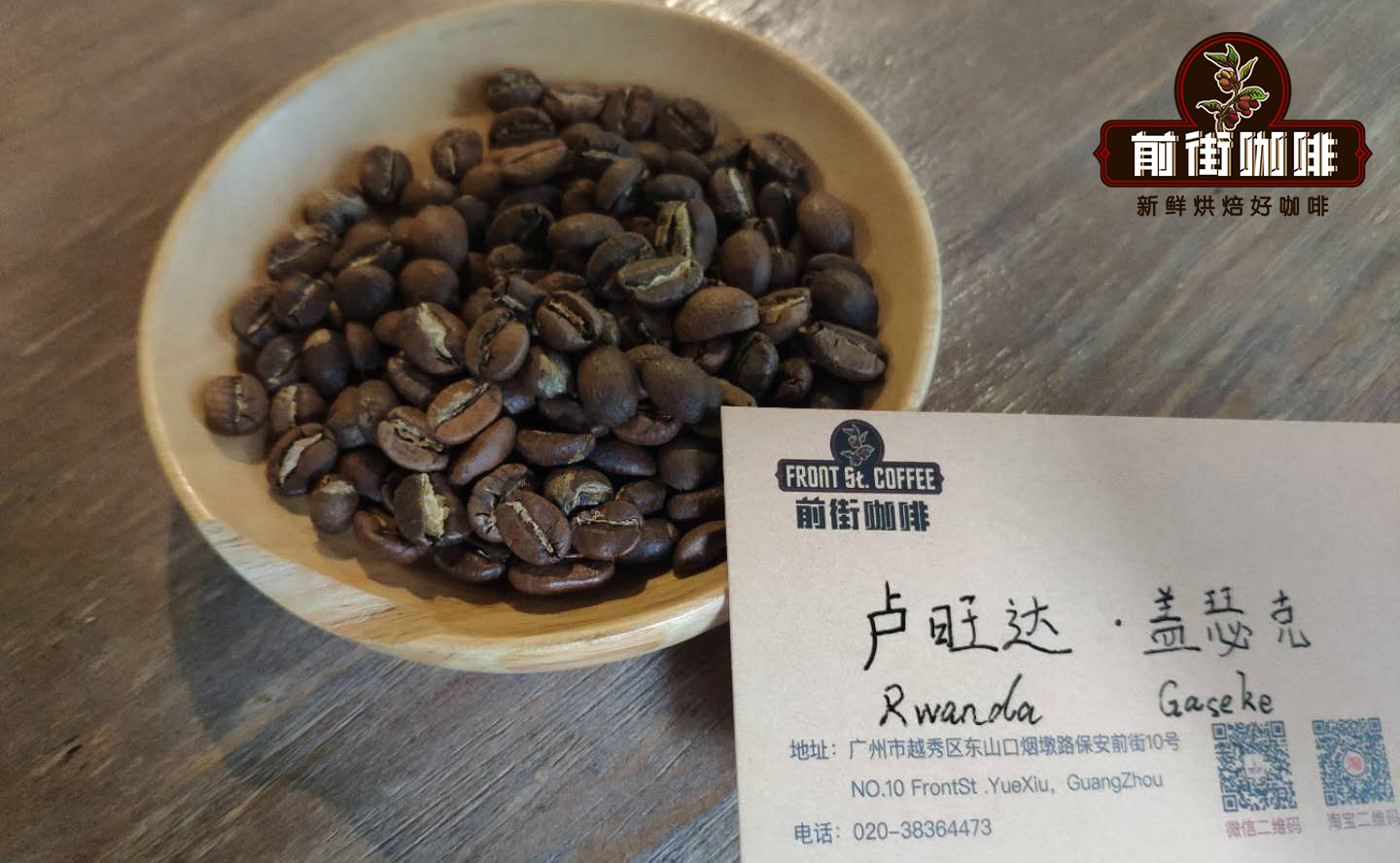
Country: Ethiopia
Production area: Nyamasheke
Altitude: 1500m
Variety: Kaddura, Kaduai, bourbon
Treatment: washing treatment
Flavor: citrus, berries, plums, nuts, honey, tea
5. Tanzania
History of coffee in Tanzania
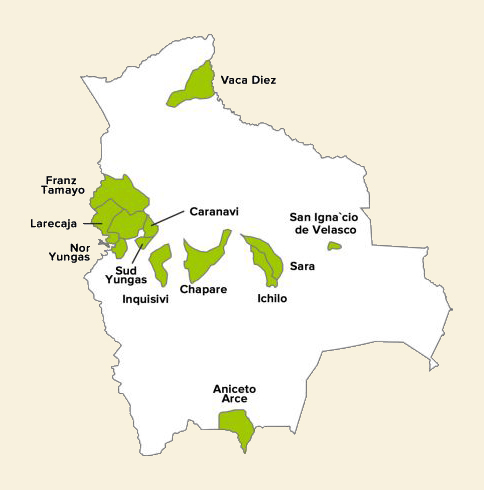
Mount Mt Kilimanjaro, Africa's highest peak, stands in northeastern Tanzania, known as Trusteeship after World War I. it was colonized by Britain and became independent in 1964.
The uniqueness of Tanzanian coffee is a combination of three different plantations in northern Tanzania. One of the plantations is located in the Kilimanjaro Mountains, the highest peak in Africa and the largest independent foothills on earth. Coffee
Grows between 1150 and 1500 meters above sea level.
In 1898, bourbon coffee was introduced to the Kilimanjaro region of Tanzania by Catholic priests. Then the Kent species was introduced in 1920. Therefore, up to now, coffee beans in Tanzania are mainly bourbon and Kent. Bourbon coffee fruit is short and round, with high density of pulp and seeds. Bourbon coffee usually has high sweetness and bright acidity. The output of bourbon coffee is 20-30% higher than that of iron pickup, but it is still regarded as a low-yield bean seed and is also vulnerable to rust leaf disease. Kent: a hybrid variety of Tibika found in India with high yield and strong disease resistance.
Tanzania producing area
According to Qianjie, there are three main coffee producing areas in Tanzania: Kilimanjaro, Ruvuma and Mbeya.
Kilimanjaro
This is the oldest Arabica coffee producing area in Tanzania, so it is not excessive to say that this area has the longest time to develop the international reputation of the producing area. Because of the long history of the coffee industry, the infrastructure here is also good, but many coffee trees are quite old, so the yield is relatively low. In recent years, other crops have a tendency to gradually replace coffee. Altitude: 1050-2500 m, harvest time: July-December.
Ruvuma
This area is located in the southernmost part of Tanzania and its name comes from the Ruvuma River. Coffee is mostly grown in the Mbingo area, which is considered to be a potential producing area to produce high-quality coffee, 1200-1800 meters above sea level, with harvest time from June to October.
Mbeya
Located around the city of Mbeya in southern Tanzania, this area is an important producer of high-value export crops such as coffee, tea, cocoa and spices. In recent years, it has attracted the attention of many certification bodies and non-governmental organizations, in order to improve the low-rated coffee quality in this area: altitude: 1200-2000, harvest time: June-October.
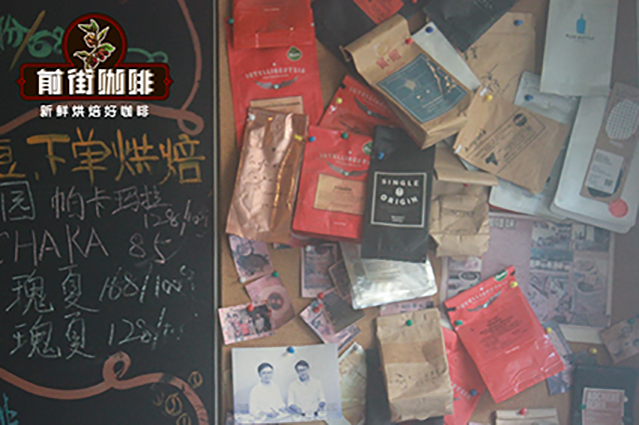
Coffee grading system in Tanzania
Coffee in Tanzania is graded in the same way as in Kenya, both according to the size of coffee beans. When screening, let the raw coffee beans pass through the screen with fixed-size holes. The larger the number of the screen, the larger the particles of the raw coffee beans.
Front Street Coffee Tanzania Kilimanjaro Coffee beans
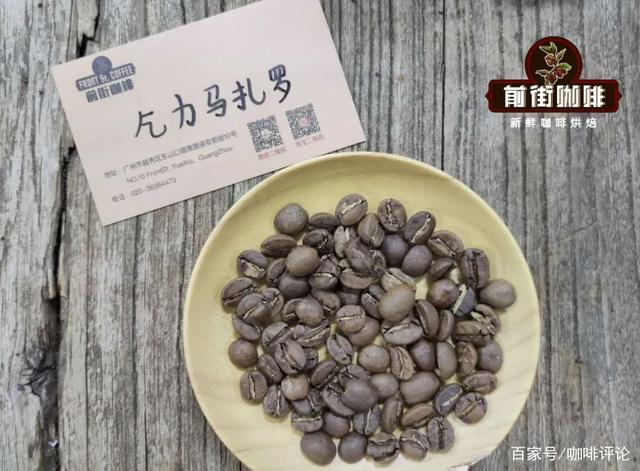
Country: Tanzania
Producing area: Mount Kilimanjaro
Altitude: 1300-2000m
Variety: bourbon
Treatment: washing treatment
Flavor: citrus, berries, honey, tea
According to Qianjie, Kilimanjaro coffee is produced in Mount Kilimanjaro, the highest mountain in Africa in northeastern Tanzania. Its coffee is of good quality, rich aroma and outstanding sour taste, so it is suitable for the preparation of comprehensive coffee.
Kilimanjaro coffee is an important lifeline of the Tanzanian economy. About 17% of the foreign exchange is generated by coffee. It is mainly produced around MountKilimanjaro near Arusha in the northeast, that is, Mount Kilimanjaro, the highest peak in Africa with perennial snow. And Kilimanjaro coffee is one of the top representatives of Tanzania AA coffee beans, bred by volcanic ash, nature's achievements of beans, coffee with a unique cocoa sub-fruit aroma, with a strong degree of glycol. It is the excellent flavor of Qianjie that will introduce this coffee bean.
6. Bolivia
History of Bolivian Coffee
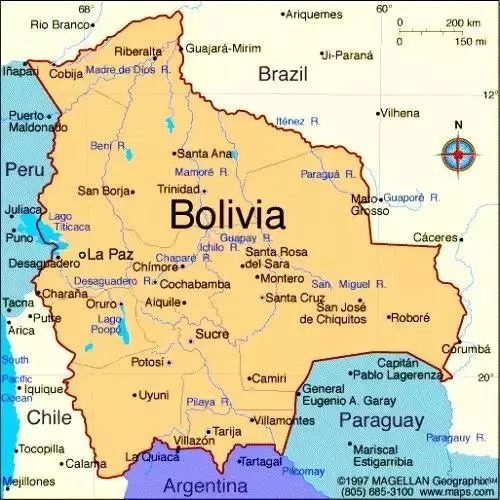
Bolivia is a landlocked country in South America, bordering Brazil and Colombia. The Bolivian capital La Paz is more than 3600 meters above sea level, making it the highest capital in the world.
And according to Qianjie, Bolivia is also the world's poorest coffee producer, even poorer than Ethiopia. In addition to the lack of ports, the high level of corruption in the local government is also the reason for the country's poverty.
The origin of Bolivian coffee can be traced back to 1880, when all production was basically related to the owners of some large farms north of La Paz. In 1991, the government promoted a plan for indigenous people to grow Bolivian coffee, but paid little attention to quality.
For Bolivian coffee farmers, the main problem has always been that it is very difficult for them to earn enough money to support the long-term cultivation of coffee. In order to subsidize the shortage of coffee, they have to grow other crops, mainly coca, which can be used to make cocaine. It is legal to grow coca in Bolivia. Encouraged by the government, coca leaves are four times as profitable as coffee and much easier than growing coffee, causing many farmers to abandon coffee or even give up farms altogether.
However, the cultivation of coca requires the use of a large number of chemical pesticides and fertilizers, which do great damage to the soil. In other words, after several years of planting coca, the soil becomes barren and can no longer grow any crops. In early 2000, the United States strongly supported Bolivian agriculture, but coffee farmers suffered the most because the Bolivian government later supported coca cultivation and relations with the United States deteriorated. Then, with the resumption of a limited anti-drug war in Bolivia, a number of programs were restarted to assist coffee farmers, such as the COE (Excellence Cup), which was held with the support of USAID.
But as if these blows were not enough, when leaf rust hit in 2013 (a mold that attacks coffee leaves, making it impossible for coffee trees to photosynthesize), Bolivia lost 50% of its coffee production in that year alone. Combined with the government's coca leaf policy and leaf rust, Bolivia's coffee production has fallen by 70% over the past decade, making it a small coffee-producing country.
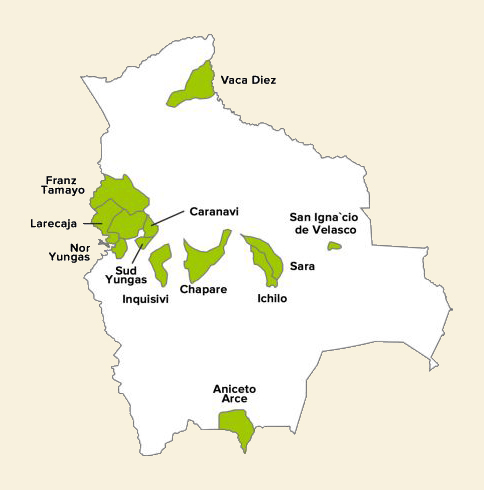
Bolivian coffee producing areas
The most famous producing area in Bolivia is La Paz, including Caravani, Yungas, Inquisivi and so on.
Among them, Yungas is located in Caranavi province, northeast of La Paz. 95% of Bolivia's coffee is produced here, and the vast forest stretching along the eastern slopes of the Andes is a fertile land whose rainy, humid and warm climate makes it a favorable area for coffee production and cultivation. At an altitude of 800-1800 meters, the area is best known as one of the most dangerous roads in the world, nicknamed Yongas Road of the Road of death, also known as "the most dangerous road in the world".
Coffee cultivation in Bolivia
Bolivia's coffee production is dominated by a smallholder production system, with 23000 small farms ranging in size from 2 to 9 hectares. In particular, about 40% of Bolivia's coffee culture is mainly sold domestically. And almost all plantations in Bolivia are grown organically.
Bolivian coffee varieties
The main varieties grown in Bolivia are Ironka, Kaddura, Kaduai and Katim derived from Arabica. The production season is from July to November.
Here are all the Bolivian coffee in front of the street.
Front street coffee Bolivian Java coffee beans
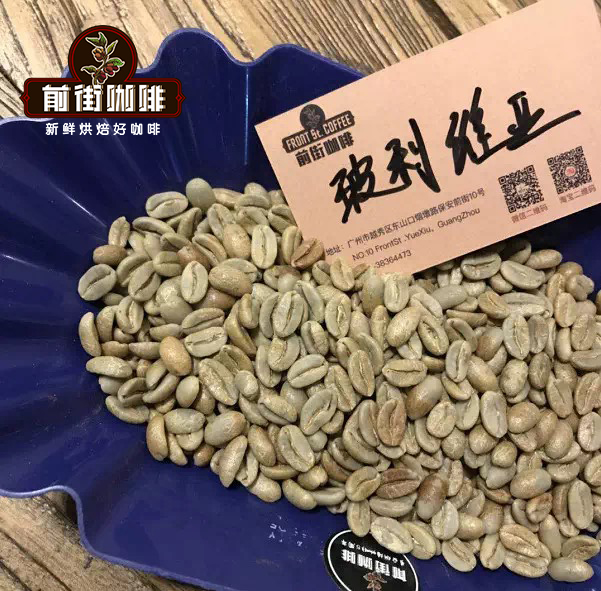
Country: Ethiopia Fiscal year: 2003
Region: La Paz
Altitude: 1600m
Breed: Java
Treatment: cocoa sun treatment
Flavor: Fermented, grape, nutty, slightly floral, honey, creamy
Front Street This Bolivian Valiki Estate coffee bean variety is Java. In Bolivia, the variety known locally as the long bean is named because of its long appearance. Its official name should be Java. Java is a very interesting bean species. From the name, it can be seen that there is a strong association with Indonesia. Java was originally a coffee tree species that originated in the primeval forests of Ethiopia, collected by local peoples and then spread through Yemen to Indonesia, where it was named Java. Java was originally thought to be a variant of tibeka, but genetic comparison revealed that Java was actually Abyss, a coffee from Ethiopia.
Java fruits and seeds are very long, shoots are brassy, plants are quite tall, but yield is low. Because of its outstanding flavor, it is not inferior to rose summer, and has stronger resistance to leaf rust and coffee fruit disease, so it is also suitable for smallholder cultivation.
The above is the regional flavor and characteristics of African coffee cherries sorted out by Qianjie. I believe that coffee fans will have a certain understanding of African coffee after reading this article, and it will be more convenient to choose coffee flavor in the future.
More fine coffee beans, please add private WeChat Qianjie Coffee, WeChat: kaixinguoguo0925
Important Notice :
前街咖啡 FrontStreet Coffee has moved to new addredd:
FrontStreet Coffee Address: 315,Donghua East Road,GuangZhou
Tel:020 38364473
- Prev

Extraction principle of hand-brewed coffee introduction to coffee quality, taste and flavor
Siphon coffee taste: can show the original taste of coffee, highlight the taste differences between different individual coffee, the taste is more full-bodied, mellow, mellow. [extraction principle of hand coffee pot]: the process of flavor extraction and filtration is carried out at the same time, and the extraction takes place at the center of pouring water. The more water, the more extraction. Freshly roasted coffee beans will produce more
- Next
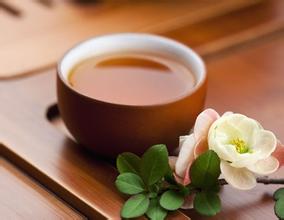
What kind of milk is not suitable for coffee flower making-video beginners
First, the production of milk foam 1, pour the milk into the milk bubble pot, the amount should not exceed the milk bubble pot 1 big 2, otherwise the milk will overflow due to expansion when making the milk bubble. 2. Heat the milk to about 60 degrees, but not more than 70 degrees, otherwise the protein structure in the milk will be destroyed. Be careful! The lid and strainer cannot be heated directly. (for example, if you make ice foam, put the milk
Related
- What is the meaning of lactic acid fermentation with coffee bean treatment?
- How to judge the state of foam by sound?
- How does the latte pull out the unicorn pattern? Come to get for a little trick to improve the flower pull!
- Will flower pulling affect the taste of the latte?
- Do you know the history of coffee?
- The difference between honey treatment and sun washing what is raisin honey treatment?
- What kind of milk can a novice use to make coffee foam to keep the foam longer? The correct method and skills of milking tutorial sharing
- Why do washed coffee beans taste sour? Flavor characteristics of washed Coffee
- Introduction to the skill of how to practice the size and height of water injection around the circle of hand-brewed coffee
- How do beginners practice coffee flower drawing from scratch?

